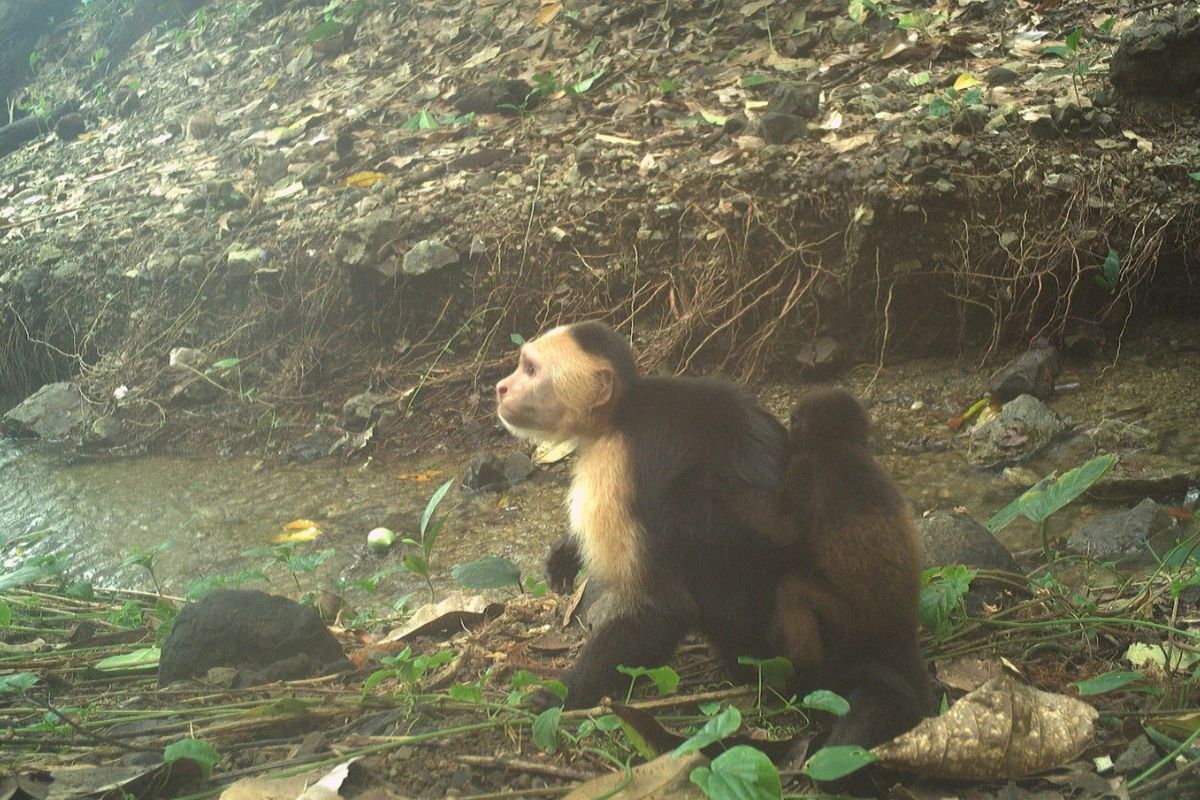Unprecedented Capuchin Monkey Behavior on Jicaron Island: Kidnapping Baby Howler Monkeys

In the verdant forests of Jicaron Island, situated off the coast of Panama, a remarkable and perplexing phenomenon has drawn the attention of primatologists from around the globe. Young male white-faced capuchin monkeys have developed a curious and concerning tradition: they are abducting baby howler monkeys from their mothers. This unprecedented behavior, which was meticulously documented by researchers in May 2025, marks the first recorded instance of one primate species systematically taking the offspring of another species without any clear predatory motive.
The unusual kidnapping behavior among capuchin monkeys first came to light in 2022 when behavioral ecologist Zoë Goldsborough was analyzing footage from motion-sensor cameras placed strategically around Jicaron Island. She was taken aback when she witnessed a white-faced capuchin, later nicknamed “Joker” due to a distinctive mouth scar resembling the infamous villain from Batman, carrying a baby howler monkey on its back. Following this initial observation, researchers confirmed Joker's involvement in kidnapping four different howler infants.
At first, scientists believed that this behavior might be an isolated instance of cross-species adoption. However, as time passed, it became clear that this wasn’t a random act. Over a span of fifteen months, researchers observed a troubling spread of this behavior among the island’s capuchin population. By mid-2023, five different capuchin monkeys had been seen carrying a total of eleven baby howlers. Alarmingly, footage captured by the cameras also illustrated the heartbreaking sight of adult howler monkeys frantically searching and calling for their missing infants.
What makes this behavior particularly puzzling is that the capuchins do not consume the infants or seem to engage with them playfully. Instead, they carry the baby howler monkeys for days on end, during which the infants often succumb to dehydration or starvation, deprived of the necessary nursing from their mothers. This peculiar social transmission of behavior bears some semblance to how orphaned animals sometimes require specialized care, but in this case, the intentions of the capuchins are far from nurturing.
As researchers delved deeper into the mechanics of these kidnappings, significant questions remained. Due to the positioning of the monitoring cameras primarily at ground level, while the primates are typically found in the canopy of Coiba National Park, the actual abduction events have not been visually recorded. Scientists remain astonished by the capuchins’ apparent skill in separating very young infants from their mothers with no visible injuries inflicted during the process.
Adding to the complexity of this situation is the notable size disparity between the two species. Adult howler monkeys can be approximately three times larger than capuchins, yet the smaller primates have managed to successfully snatch newborns just one or two days old. This form of unexpected predatory behavior mirrors other startling behaviors recently uncovered in various ecosystems.
By July 2023, when the initial study reached its conclusion, researchers documented at least one more kidnapping incident. However, it appears that the frequency of these occurrences is on the decline, possibly due to a diminishing population of howler monkeys on the island. Howler monkeys are classified as an endangered species, raising alarm bells regarding the implications of this predatory behavior for conservation efforts.
Researchers are inclined to view the capuchins’ kidnapping behavior as a social tradition or a “fad” that has emerged among the young males of Jicaron Island. This phenomenon is not entirely without precedent; scientists have observed the transmission of seemingly arbitrary behaviors among other animal populations. For instance, co-author Brendan Barrett previously studied capuchins in Costa Rica that began grooming porcupines, a behavior that eventually faded.
Similar social traditions have also been recorded among marine mammals. In the 1980s, orcas along the American Northwest coast adopted a quirky habit of balancing dead salmon on their heads, a behavior affectionately dubbed “salmon hats.” Intriguingly, this practice vanished for decades only to resurface last year. Such examples illustrate how animal cultures can evolve and transmit behaviors, much like how maternal behaviors develop within marine mammals.
The research team initially set out to study the capuchins of Jicaron Island in 2017 due to their remarkable tool use—specifically, their ability to utilize stones to crack open nuts and shellfish. This demonstrated intelligence, combined with an abundance of food resources and a relative lack of predators, has provided these primates with considerable leisure time. Barrett describes them as “exploratory agents of chaos,” suggesting that this surplus time may allow for the development and transmission of both practical behaviors, such as tool usage, and seemingly arbitrary actions like infant kidnapping.
The findings from this study were published in Current Biology in May 2025, with Goldsborough as the lead author. The research team proposes that this case represents the first documented instance of one species repeatedly kidnapping the young of another species. The consequences have been dire, with researchers confirming that at least four baby howler monkeys have perished as a result, with indications that similar fates likely await other abducted infants.
This research sheds light on behavioral evolution and social learning among primates. In environments where fundamental survival needs are readily met, these animals may develop complex social behaviors that are not directly linked to survival advantages. This phenomenon parallels how technological innovations have enabled humans to cultivate cultural practices that extend beyond mere survival.
Some scientists speculate that investigating unusual behaviors like these could enhance our understanding of behavioral adaptability across various species. Advances in animal observation technology, including robotic systems designed for studying marine life, have enabled researchers to document previously unknown animal behaviors with unprecedented accuracy.
The ongoing documentation of rare primate behaviors continues to enrich our understanding of animal cognition. From tool use to intricate social traditions, primates exhibit remarkable behavioral flexibility. Occasionally, these observations lead to unexpected discoveries, similar to how iconic animals can inspire cultural references or how rare species come to be documented for the first time.
The capuchin kidnapping phenomenon joins a growing list of unusual animal behaviors, such as the specialized feeding strategies observed in cave-dwelling crocodiles. These collective studies serve to enhance our understanding of behavioral evolution and the intricate social lives of animals, reminding us that the natural world is full of surprises that continue to astonish even the most seasoned researchers.
























